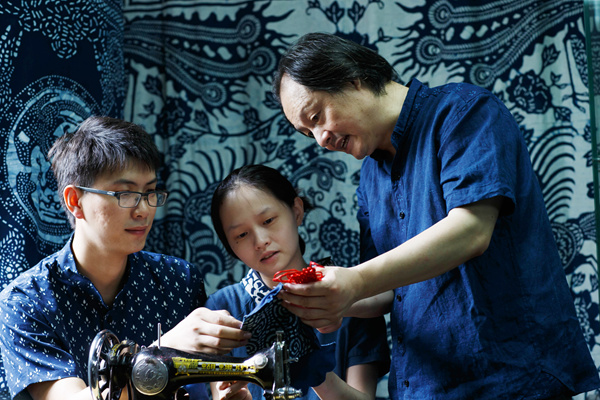

Ancient coloring craft in good hands as it attracts new generation, Wang Ru reports.
Ni Shenjian was so devoted to his craft that he became immersed, literally, in it. He can still easily recall the time when he started to learn the craft of making blue calico (untreated cotton, often used for wrapping, tablecloths and bedsheets) about a decade ago. When Ni, about 180 centimeters tall, stood in front of a large dye vat, about 50 cm deep, trying to lift a piece of 12-meter wet cloth from it, he lost his footing. Next thing he knew he had fallen into the vat and emerged resembling a member of the Na'vi-the blue-skinned protagonists of the movie Avatar.
Ten years later, the dye on his skin has long since disappeared, but his skills have grown deeper and more prominent. He has become a city-level inheritor of the craft, following the steps of his father-in-law Wu Yuanxin and his wife Wu Lingshu, after closing the account on his former job as a bank clerk.
The craft of dyeing and treating calico originated during the Song Dynasty (960-1279), and reached its heyday during the Ming (1368-1644) and Qing (1644-1911) dynasties.